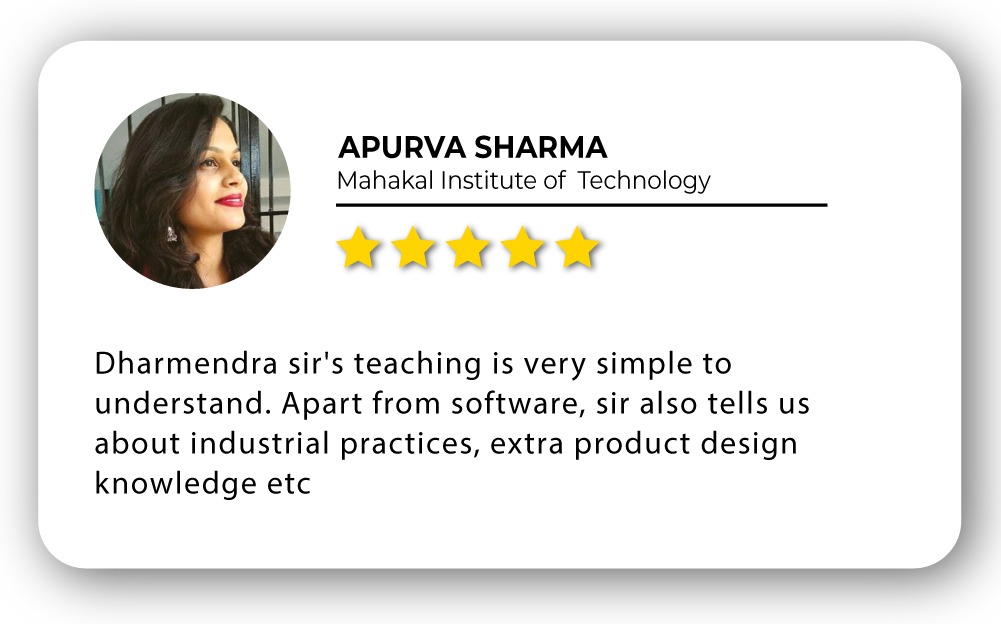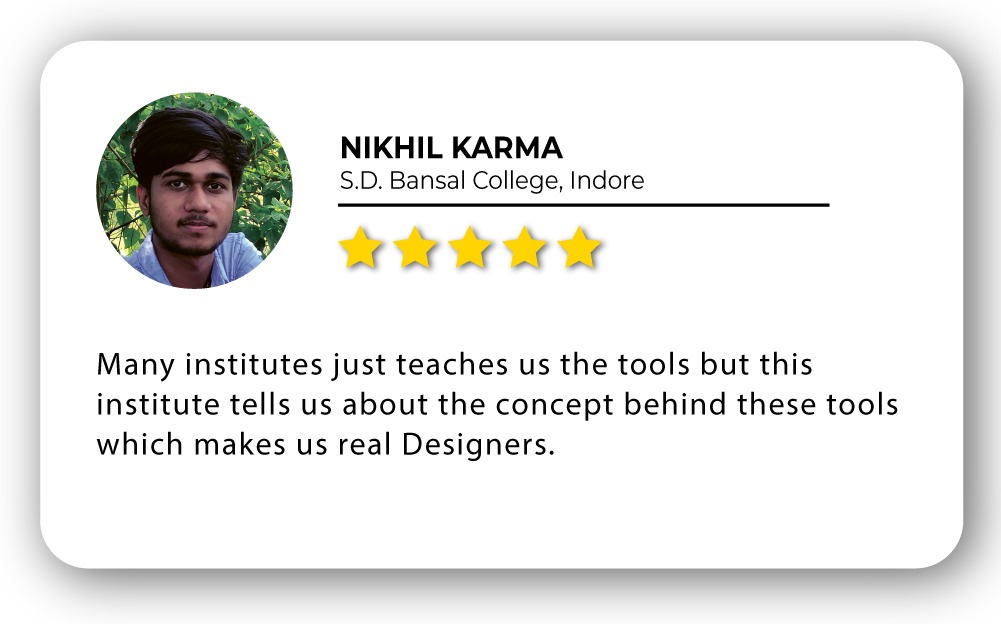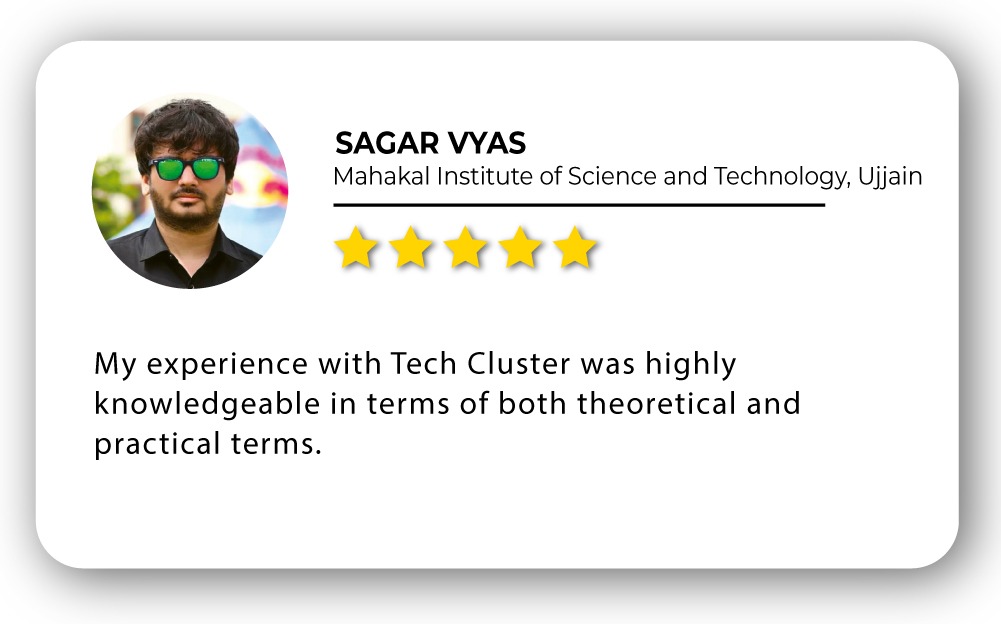
Augmented Reality (AR) and Virtual Reality (VR) in Civil Design
- Real-Time Experts Sessions
- LIVE Project
- Certification
- Affordable Fees
- Flexibility
- Placement Support
Augmented Reality (AR) enhances civil design by overlaying digital information onto the real world, aiding visualization, on-site assistance, and collaborative discussions. Virtual Reality (VR) immerses users in entirely digital environments, facilitating in-depth design reviews, training simulations, and public engagement for better project visualization. Both technologies revolutionize civil engineering by improving communication, collaboration, and decision-making processes.
If you are looking to get trained in Augmented Reality (AR) and Virtual Reality (VR) in Civil Design, then you can avail the best Augmented Reality (AR) and Virtual Reality (VR) in Civil Design training in Indore at Tech Cluster, an institute in Indore that covers all the important factors from basic to advanced interview preparation and 100% placement assistance in 3D Studio Max Training.
Applications :
The integration of Augmented Reality (AR) and Virtual Reality (VR) in civil design is transforming the traditional landscape of project visualization, collaboration, and decision-making. Augmented Reality enhances design visualization by overlaying 3D models onto real-world environments, allowing designers to assess proposed structures within their actual contexts. On-site workers benefit from real-time information delivered through AR applications, improving efficiency and accuracy. Collaborative design discussions are enriched as AR enables multiple users to interact with the same augmented content simultaneously. Virtual Reality, on the other hand, immerses users in entirely
Civil
Course Highlights:
Augmented Reality (AR) and Virtual Reality (VR) in Civil Design
• Visualization and Design Review:
• On-Site Construction Assistance:
• Maintenance and Inspection:
• Public Engagement:
• Collaborative Design:
• Immersive Design Review:
• Simulation of Construction Processes:
• Virtual Site Tours:
• Public Engagement and Marketing:
• Training and Skill Development:
Duration :
- 50 Hours Theory
- 35 Hours Practical
- 45 Hours Project work
Augmented Reality (AR) in Civil Design: :
Visualization and Design Review:
• Overlay of Information: AR allows designers to overlay digital information onto the real-world environment, providing a contextual view of design elements.
• Site Assessment: Engineers can use AR to visualize proposed structures within the existing physical space, aiding in site assessment and decision-making.

On-Site Construction Assistance:
• Real-time Data Overlay: AR can provide on-site workers with real-time information, such as construction plans, measurements, and safety guidelines, superimposed onto their field of view.
• Construction Verification: AR can assist in verifying that on-site construction aligns with the design by overlaying digital plans onto the actual construction site.

Maintenance and Inspection:
• Data Display: AR can display maintenance information or inspection details when viewing a physical structure, helping maintenance personnel identify components and access relevant data.
• Training and Guidance: AR can be used to train workers by overlaying step-by-step instructions and safety guidelines onto equipment or structures.

Public Engagement:
• Interactive Presentations: AR enhances public engagement by providing interactive presentations of proposed projects, allowing stakeholders to visualize and understand the impact of designs in the real world.

Collaborative Design:
• Remote Collaboration: Designers can use AR to collaborate in real time, even if located in different physical locations, by sharing a common augmented space.
• Design Iterations: AR facilitates the visualization of design iterations, enabling teams to make informed decisions during the design process.
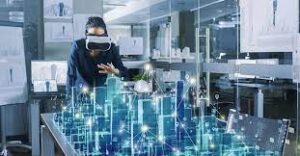
Virtual Reality (VR) in Civil Design:
Immersive Design Review:
• 3D Visualization: VR provides immersive 3D visualizations of civil designs, allowing stakeholders to explore and navigate through virtual environments.
• Scale and Proportion: Designers can experience the scale and proportions of structures in a realistic virtual space, gaining insights into the spatial relationships of various components.

Simulation of Construction Processes:
• Construction Sequencing: VR can simulate construction sequences, helping project teams visualize and optimize the construction process before breaking ground.
• Safety Training: VR allows for realistic safety training simulations, helping workers experience and respond to potential on-site hazards.

Virtual Site Tours:
• Remote Site Inspection: Stakeholders can remotely tour construction sites using VR, facilitating collaboration and decision-making without the need for physical presence.
• As-Built Comparisons: VR enables the comparison of virtual models with as-built conditions, aiding in quality control and project documentation.

Public Engagement and Marketing:
• Virtual Walkthroughs: VR offers virtual walkthroughs of proposed projects, providing a compelling and immersive experience for the public and potential investors.
• Marketing Presentations: Developers can use VR to create engaging marketing presentations for real estate projects, showcasing the envisioned final product.

Training and Skill Development:
• Equipment Operation: VR allows for training in the operation of heavy machinery and equipment in a simulated environment, minimizing the risks associated with on-site training.
• Emergency Response: VR simulations can replicate emergency scenarios, preparing construction personnel for various on-site challenges and responses.

Upcoming Batches
Certifications
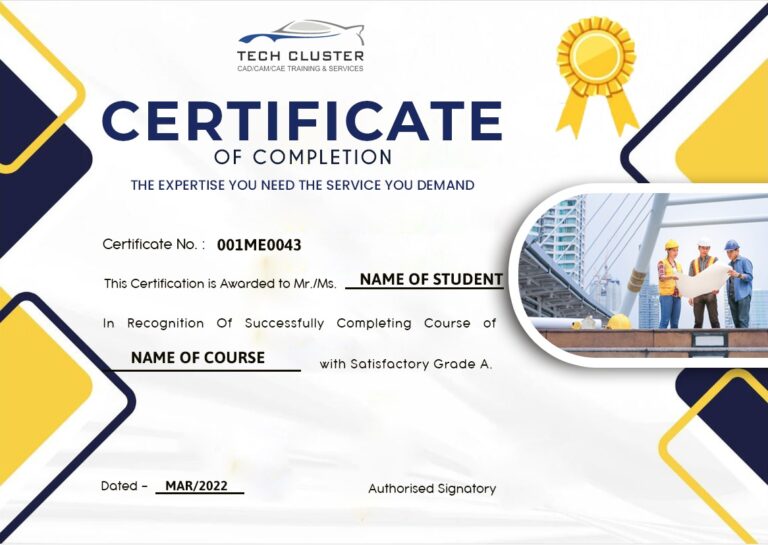
3Ds Max Certification Training
About 3Ds Max Certification Training in Indore at Tech Cluster
Reviews
